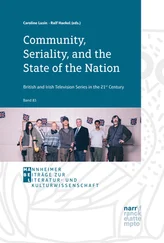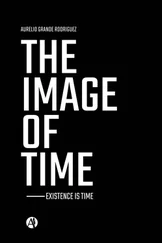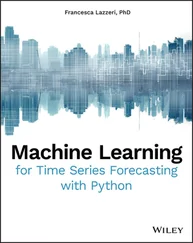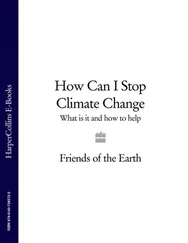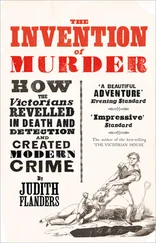1 Cover
2 Title Page SCIENCES Image , Field Director – Laure Blanc-Feraud Remote Sensing Imagery , Subject Heads – Emmanuel Trouvé and Avik Bhattacharya
3 Copyright First published 2021 in Great Britain and the United States by ISTE Ltd and John Wiley & Sons, Inc. Apart from any fair dealing for the purposes of research or private study, or criticism or review, as permitted under the Copyright, Designs and Patents Act 1988, this publication may only be reproduced, stored or transmitted, in any form or by any means, with the prior permission in writing of the publishers, or in the case of reprographic reproduction in accordance with the terms and licenses issued by the CLA. Enquiries concerning reproduction outside these terms should be sent to the publishers at the undermentioned address: ISTE Ltd 27-37 St George’s Road London SW19 4EU UK www.iste.co.uk John Wiley & Sons, Inc. 111 River Street Hoboken, NJ 07030 USA www.wiley.com © ISTE Ltd 2021 The rights of Abdourrahmane M. Atto, Francesca Bovolo and Lorenzo Bruzzone to be identified as the authors of this work have been asserted by them in accordance with the Copyright, Designs and Patents Act 1988. Library of Congress Control Number: 2021941648 British Library Cataloguing-in-Publication Data A CIP record for this book is available from the British Library ISBN 978-1-78945-056-9 ERC code: PE1 Mathematics PE1_18 Scientific computing and data processing PE10 Earth System Science PE10_3 Climatology and climate change PE10_4 Terrestrial ecology, land cover change PE10_14 Earth observations from space/remote sensing
4 Preface
Volume 1: Unsupervised methods Volume 2: Supervised methods
5 List of Notations
6 1 Unsupervised Change Detection in Multitemporal Remote Sensing Images 1.1. Introduction 1.2. Unsupervised change detection in multispectral images 1.3. Unsupervised multiclass change detection approaches based on modeling spectral–spatial information 1.4. Dataset description and experimental setup 1.5. Results and discussion 1.6. Conclusion 1.7. Acknowledgements 1.8. References
7 2 Change Detection in Time Series of Polarimetric SAR Images 2.1. Introduction 2.2. Test theory and matrix ordering 2.3. The basic change detection algorithm 2.4. Applications 2.5. References
8 3 An Overview of Covariance-based Change Detection Methodologies in Multivariate SAR Image Time Series 3.1. Introduction 3.2. Dataset description 3.3. Statistical modeling of SAR images 3.4. Dissimilarity measures 3.5. Change detection based on structured covariances 3.6. Conclusion 3.7. References
9 4 Unsupervised Functional Information Clustering in Extreme Environments from Filter Banks and Relative Entropy 4.1. Introduction 4.2. Parametric modeling of convnet features 4.3. Anomaly detection in image time series 4.4. Functional image time series clustering 4.5. Conclusion 4.6. References
10 5 Thresholds and Distances to Better Detect Wet Snow over Mountains with Sentinel-1 Image Time Series 5.1. Introduction 5.2. Test area and data 5.3. Wet snow detection using Sentinel-1 5.4. Metrics to detect wet snow 5.5. Discussion 5.6. Conclusion 5.7. Acknowledgements 5.8. References
11 6 Fractional Field Image Time Series Modeling and Application to Cyclone Tracking 6.1. Introduction 6.2. Random field model of a cyclone texture 6.3. Cyclone field eye detection and tracking 6.4. Cyclone field intensity evolution prediction 6.5. Discussion 6.6. Acknowledgements 6.7. References
12 7 Graph of Characteristic Points for Texture Tracking: Application to Change Detection and Glacier Flow Measurement from SAR Images 7.1. Introduction 7.2. Texture representation and characterization using local extrema 7.3. Unsupervised change detection 7.4. Experimental study 7.5. Application to glacier flow measurement 7.6. Conclusion 7.7. References
13 8 Multitemporal Analysis of Sentinel-1/2 Images for Land Use Monitoring at Regional Scale 8.1. Introduction 8.2. Proposed method 8.3. SAR processing 8.4. Optical processing 8.5. Combination layer 8.6. Results 8.7. Conclusion 8.8. References
14 9 Statistical Difference Models for Change Detection in Multispectral Images 9.1. Introduction 9.2. Overview of the change detection problem 9.3. The Rayleigh–Rice mixture model for the magnitude of the difference image 9.4. A compound multiclass statistical model of the difference image 9.5. Experimental results 9.6. Conclusion 9.7. References
15 List of Authors
16 Index
17 Summary of Volume 2
18 End User License Agreement
1 Chapter 1 Figure 1.1. The main technical components of an unsupervised CD process Figure 1.2. 2D polar change representation domain in the C 2 VA method Figure 1.3. Block scheme of the proposed M 2 C 2 VA technique Figure 1.4. Block scheme of the proposed superpixel-level multiclass CD approach Figure 1.5. Illustration of the decision-level fusion-based binary CD step. For ... Figure 1.6. Color-infrared composite of bitemporal QuickBird pan-sharpened image... Figure 1.7. False color composite of QuickBird images of the Indonesia tsunami d... Figure 1.8. 2D compressed change representation in the polar domain (Xuzhou data... Figure 1.9. Determination of the optimal segmentation scale in the Xuzhou datase... Figure 1.10. Comparison of the multiclass CD maps obtained by: (a) IR-MAD; (b) S ... Figure 1.11. 2D compressed change representation in the polar domain (Indonesia ... Figure 1.12. Determination of the optimal segmentation scale in the Indonesia ts... Figure 1.13. Comparison of the CD maps obtained by: (a) IR-MAD; (b) S 2 CVA; (c) p...
2 Chapter 2 Figure 2.1. An idealized parameter value function showing a linear trend with se... Figure 2.2. Figure showing the connection between the p-value for an outcome of ... Figure 2.3. The power function for testing whether two G(6, βt)-distributions, t... Figure 2.4. Simulating 128 × 128 pixel values at two time points with independen... Figure 2.5. Simulating 128 × 128 pixel values according to the signal + noise mo...Figure 2.6. Each column represents a simulation study on the distribution of 128...Figure 2.7. Simulating 128 × 128 pixel values at two time points with independen...Figure 2.8. Flowchart for the change detection algorithm. In the left part, we a...Figure 2.9. RGB images of diagonal elements of L-band SAR data acquired in 1998 ...Figure 2.10. Left: the values of the likelihood ratio test statistic for the omn...Figure 2.11. The first image shows when the first detected change occurred. In t...Figure 2.12. Histograms for intermediate p-values for areas covered with forest ...Figure 2.13. (Top) Zoomed-in views of Radarsat-2 images showing two moving dredg...Figure 2.14. Port of Tripoli: First four change maps of a total of 68 covering t...Figure 2.15. Fraction of positive definite changes (vessel arrivals) at the main...Figure 2.16. Change fractions showing effects of the 2020 Covid-19 lockdown star...Figure 2.17. Buzi district, Mozambique: Six change maps of a total of 15 for 16 ...Figure 2.18. Change images for the region around Fishlake, South Yorkshire. Left...Figure 2.19. Change fractions over the 2018 growing season for agricultural fiel...
3 Chapter 3Figure 3.1. General procedure for a change detection methodology Figure 3.2. UAVSAR dataset used in this study for Scene 1. Four dates are availa...Figure 3.3. UAVSAR dataset used in this study for Scene 2. Two dates are availab...Figure 3.4. UAVSAR dataset used in this study for Scene 3 Figure 3.5. Ground truth for Scenes 1, 2 and 3. For a color version of this figu...Figure 3.6. Illustration of the sliding windows (in gray) approach (p = 3 , N = 9...Figure 3.7. ROC plots for a window size of 5 × 5 for the three scenes . Top: Scen...Figure 3.8. Output of  (bottom) on Scene 3. The major difference between the tw...Figure 3.9. Low-rank properties of UAVSAR data with polarimetric and spectro-ang...Figure 3.10. Comparison between four methods: Gaussian, low-rank Gaussian, compo...Figure 3.11. Comparison for Scene 1 of the LRCG (low-rank compound Gaussian) for...
(bottom) on Scene 3. The major difference between the tw...Figure 3.9. Low-rank properties of UAVSAR data with polarimetric and spectro-ang...Figure 3.10. Comparison between four methods: Gaussian, low-rank Gaussian, compo...Figure 3.11. Comparison for Scene 1 of the LRCG (low-rank compound Gaussian) for...
Читать дальше
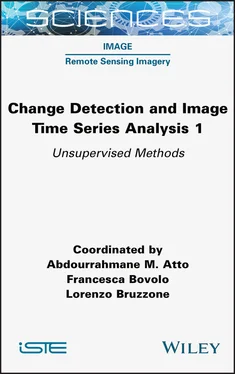
 (bottom) on Scene 3. The major difference between the tw...Figure 3.9. Low-rank properties of UAVSAR data with polarimetric and spectro-ang...Figure 3.10. Comparison between four methods: Gaussian, low-rank Gaussian, compo...Figure 3.11. Comparison for Scene 1 of the LRCG (low-rank compound Gaussian) for...
(bottom) on Scene 3. The major difference between the tw...Figure 3.9. Low-rank properties of UAVSAR data with polarimetric and spectro-ang...Figure 3.10. Comparison between four methods: Gaussian, low-rank Gaussian, compo...Figure 3.11. Comparison for Scene 1 of the LRCG (low-rank compound Gaussian) for...

